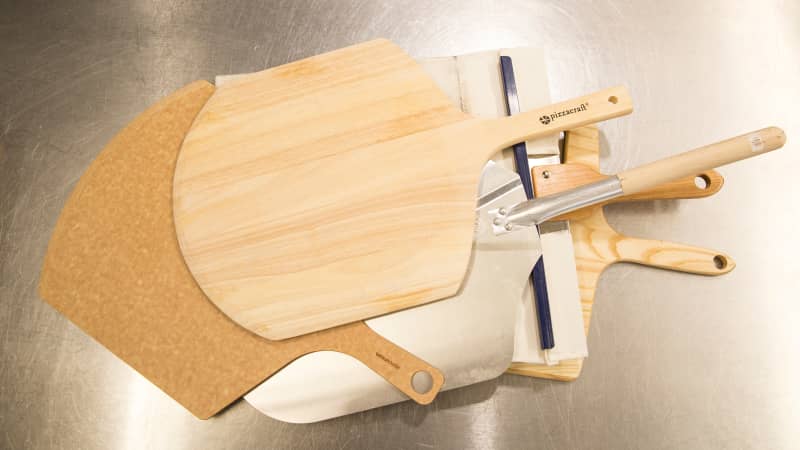The Best Glass Baking Dishes
Equipment Review
Are flashy, innovative peels better than basic models?
Last Updated June 26, 2023. Appears in America's Test Kitchen TV Season 18: Summer Cookout

Our favorite baking peel by EXO has been discontinued. In its place, we recommend EXO's composite baking peel, the EXO Non-Stick Super Peel Pro Composite.
We often use baking peels to move pizza, bread, and other baked goods into, out of, and within hot ovens. We tested a variety of different peels to see which were best. In keeping with what we’d learned in our previous testing, we selected peels with blades (the flat, spatula-like part) at least 14 inches wide, allowing us to accommodate large loaves comfortably, and handles that were about 8 inches long, giving us just enough distance from the heat of the oven without sacrificing control.
When baking, we use a peel for three specific tasks. First, we unload raw dough onto a hot baking stone in the oven. This is one of the riskier steps in the baking process, since delicate, carefully formed loaves and pizza rounds can lose their shape if they stick to the peel or get shaken off it too vigorously. Next, we rotate the bread or pizza in the oven to ensure even baking. And finally, we remove the baked items from the oven.
No peel excelled at all three tasks. The wood peel was very good at unloading the dough. Once it was lightly sprinkled with flour, even the stickiest dough slipped right off when we gave the peel’s handle a quick jerk, though occasionally perfect pizza rounds became a bit oblong when we were too forceful. Even better were the Super Peels, which were fitted with innovative cotton conveyor belts that were practically nonstick once dusted with flour, allowing us to unroll the thinnest and most fragile pizzas without misshaping them.
Unfortunately, none of these models were great at in-oven rotation. The wood peel was too thick to get up and under breads and pizzas easily—a design flaw that also made it hard to remove these foods when fully baked. And while you could technically pick up and rotate the half-baked breads and pizzas with the conveyer belts on the Super Peels, it took a little more time than we’d prefer. In addition, at 16 inches wide, the large aluminum Super Peel was a bit too big to maneuver comfortably within a standard home oven. That said, both did a reasonable—if slightly time-consuming—job of removing the finished goods.
By contrast, the metal and wood-fiber composite blades were much more agile when removing the bread and pizza, mostly because they were thinner (0.25 inches thick or less) and could slip under the food more easily. The problem was that raw dough tended to stick to these models; we had to coat them with lots of flour in order to unload the loaves and pizza rounds intact, leaving the food unpleasantly dusty when it came out of the oven.
Task performance aside, a few factors made certain peels easier to use than others. While the conventional metal, wood, and composite peels could...

The mission of America’s Test Kitchen Reviews is to find the best equipment and ingredients for the home cook through rigorous, hands-on testing. We stand behind our winners so much that we even put our seal of approval on them.

Miye is a senior editor for ATK Reviews. She covers booze, blades, and gadgets of questionable value.

This is a members' feature.